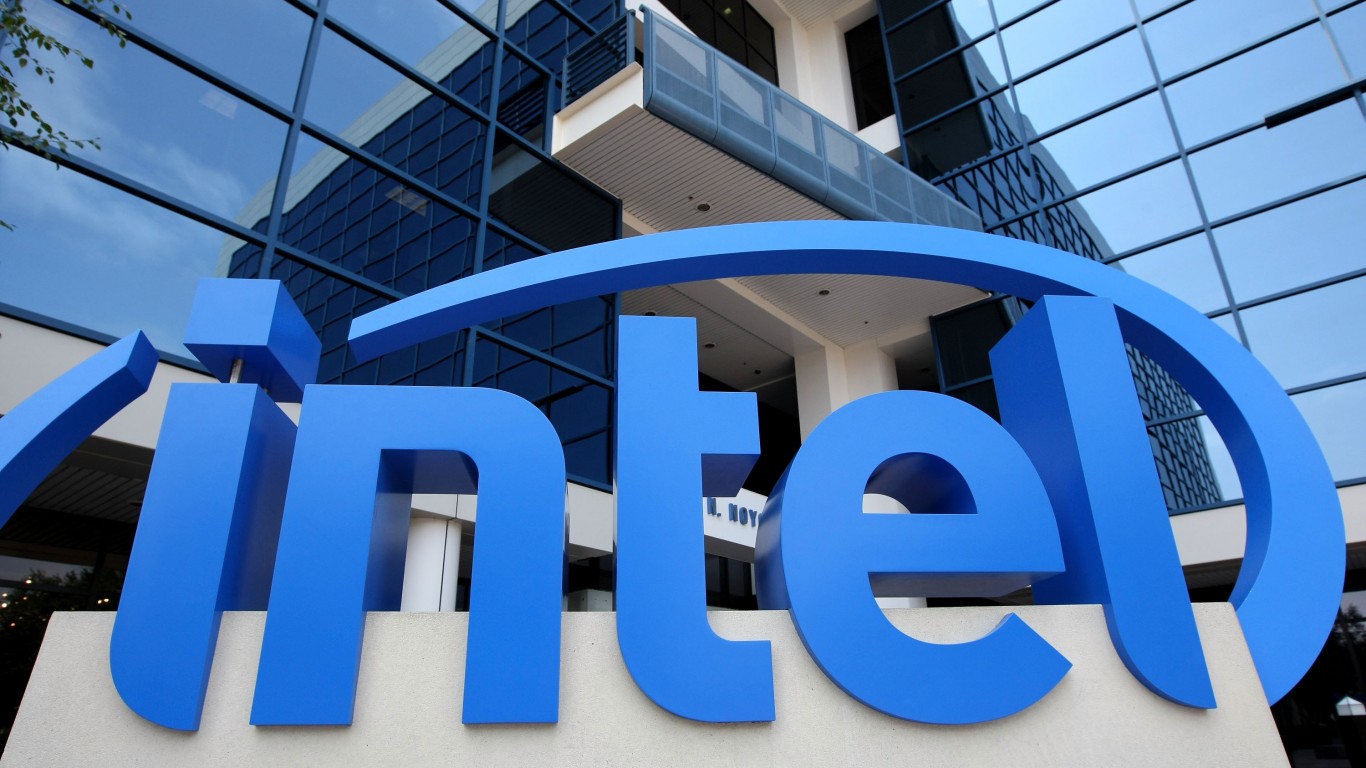Technology
Will New 5G Chips From Intel Grow Its Market Opportunities by $25 Billion?

Published:
Last Updated:

If there is one coming trend in technology and communications that has received its fair share of media attention and market hype in 2019 and 2020, it is the coming 5G explosion. There is still quite a large debate about what 5G really means from carrier to carrier, but the goal is exponentially faster wireless communications services for mobile. Companies have expanded their offerings for chipsets, processors and communications network infrastructure for some time, and now Intel Corp. (NASDAQ: INTC) chose to announce its new line of chips targeting 5G network infrastructure.
The company announced its new Atom P5900, a 10nm system-on-a-chip (SoC) for wireless base stations. The company now claims that it expects to be the leading silicon provider in base stations by 2021. It had previously forecast a year longer, and this targets high bandwidth and low-latency for 5G base stations. Intel is expecting a target market of 6 million 5G base stations forecasted through 2024.
Intel also introduced its new second-generation Xeon scalable processors, with over 30 million units sold. The company noted that 50% of core network deployments are transforming to virtualized networks this year and are expected to grow by more than 80% by 2024. Intel’s claim is that new Xeon Scalable processors launched today will deliver an average of 36% higher performance with an average of 42% more “performance per dollar” than the prior generation Xeon Gold along with hardware-enhanced security and built-in encryption accelerators.
The last introduction was its Ethernet 700 series adapter, which is said to increase the timing precision required for 5G networks via hardware and software enhancements, and this prior codename of “Edgewater Channel” is said to be sampling now and the company is targeting the second quarter of 2020 for production.
Navin Shenoy, head of Data Platforms Group at Intel, said:
As the industry makes the transition to 5G, we continue to see network infrastructure as the most significant opportunity, representing a $25 billion silicon opportunity by 2023. By offering customers the fastest and most effective path to design, deliver and deploy 5G solutions across core, edge and access, we are poised to expand our leading silicon position in this growing market.
A $25 billion market opportunity is referring to the marketplace rather than what the company expects to gain on its own. Time will tell on that, and Intel is already relying on chipset and processor sales into PCs, servers and data centers on top of other growth markets. That said, the consensus estimates from Refinitiv only project revenue growth of close to 2.5% in 2020 and barely 1% in 2021.
Intel shares were last seen down 2.55% at $62.70 on Monday morning as the fears of the coronavirus spreading has been a major drag on the market and a major drag on the leading technology stocks. Intel recently put in a post-earnings high of $69.62, and it is still up almost 50% from its 52-week low of $42.86.
The full story and technical description shows the chipsets and what their claims on performance are.
Thank you for reading! Have some feedback for us?
Contact the 24/7 Wall St. editorial team.